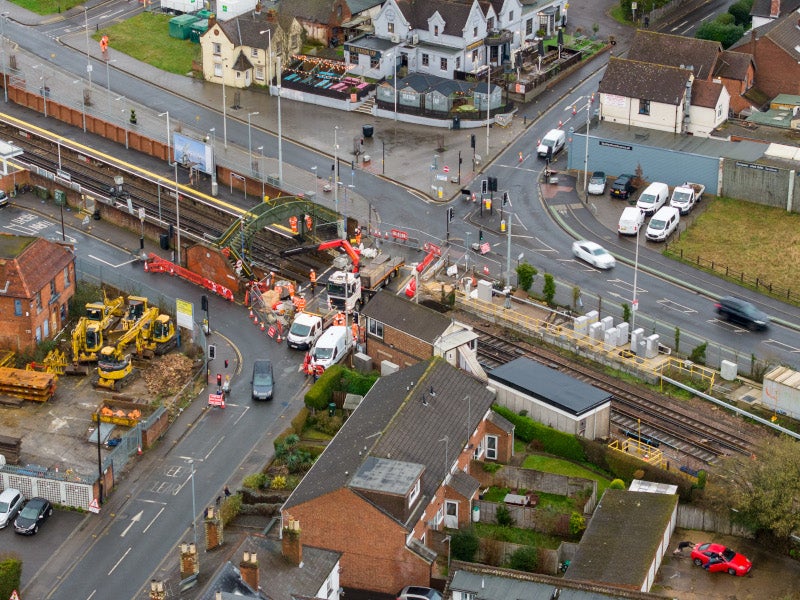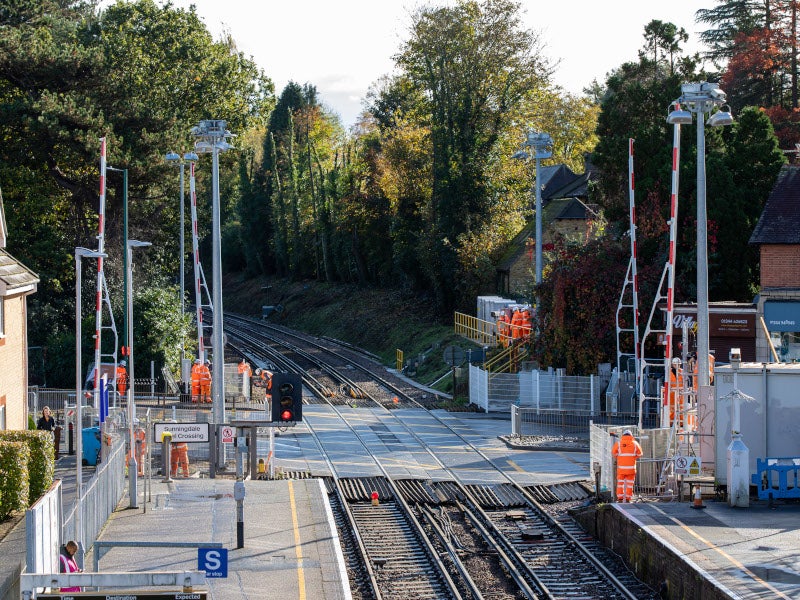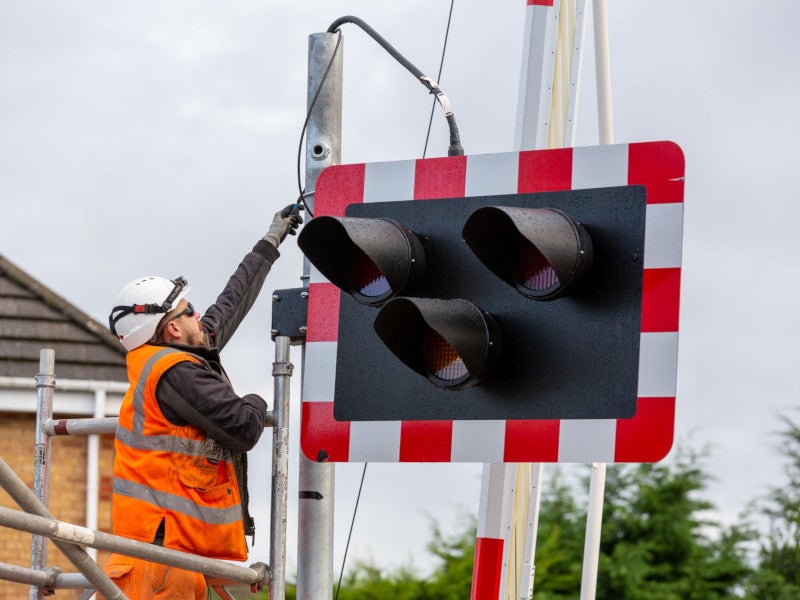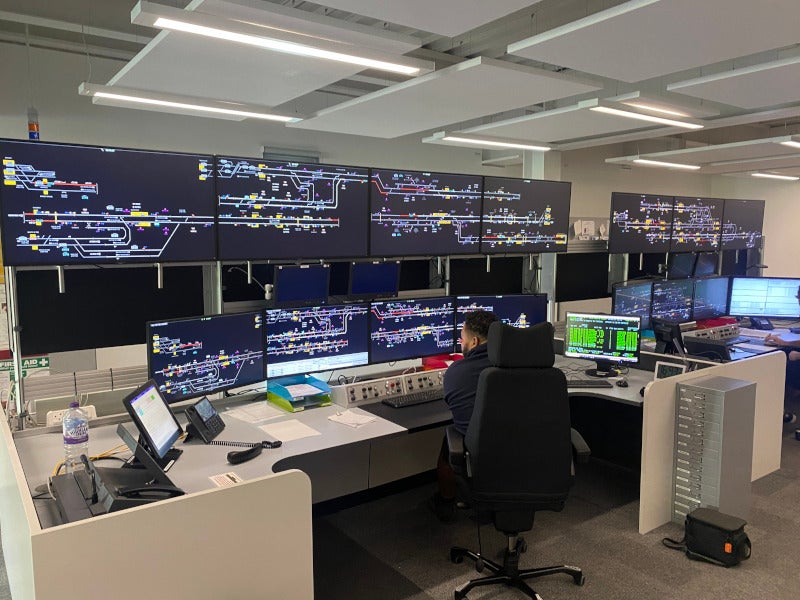The Feltham and Wokingham Re-signalling Programme (FWRP) represents a significant upgrade to the railway signalling systems along some of the most congested tracks between Feltham and Wokingham in South West London, UK.
Network Rail, the project developer, has invested about £375m ($473m) to modernise the infrastructure, which had been relying on outdated technology from the 1970s.
The project, which began in 2019 and was completed in February 2024, is expected to enhance the performance, safety, and reliability of the network, ensuring efficient passenger and freight services for the foreseeable future.
The FWRP was executed in five phases, with the initial phase zero completed in June 2019. The phase saw the commissioning of new signalling equipment between Strawberry Hill and Shepperton. The remaining phases of the project were completed between April 2021 and February 2024.
Project background
The Feltham and Wokingham area is a critical section of the rail network to the south-west of London, feeding into the busy London Waterloo station.
The legacy signalling system, including track circuits and level crossings, surpassed its life, causing significant performance issues and impacting the reliability of the network.
Network Rail’s implementation of state-of-the-art signalling equipment, managed by the Feltham area signalling centre and Wokingham signal box, aims to address the challenges.
The project’s completion is set to modernise the signalling systems comprehensively, substantially improving the network’s reliability and performance.
Feltham and Wokingham re-signalling project details
The Feltham and Wokingham re-signalling project encompasses a comprehensive upgrade of more than 80 miles of railway infrastructure in the UK. The scope of the project covers the areas of Feltham, Hounslow, Shepperton, Twickenham, Windsor & Eton Riverside, and Wokingham.
The project is divided into five phases, with the first two focusing on areas, including Strawberry Hill, Shepperton, Virginia Water, and Ascot.
The third and fourth phases were the most extensive, extending over 40 miles of track and signalling in the Feltham area.
The stage involved the installation of 144 digital signals, the upgrade of seven level crossings, and the laying of 260 miles of cabling.
Additionally, 234 axle counters were installed to support the new digital signalling technology. In total, 116 new digital signals and 11km of new cabling were added during the phases.
Phase five, which controls the Wokingham area signalling, includes the introduction of 43 new signals, upgrades to two level crossings, and the renewal of a double railway junction at Wokingham.
The fifth phase also saw the transfer of signalling control from Feltham and Wokingham to the rail operating centre (ROC) in Basingstoke. It encompassed the upgrade of 16 level crossings and the installation of 500 pieces of signalling equipment.
The centralisation of control into the ROC has improved communication among signallers who are now co-located rather than dispersed in remote signal boxes. The shift also delivers cost efficiencies in operation.
Benefits of the project
With the FWRP’s completion, passengers and freight services are set to benefit from a digital signalling system that promises to optimise performance, increase capacity, enhance safety, and minimise delays.
The project’s success is instrumental in supporting efficient rail services and catering to the demands of a modern railway network.
The replacement of outdated signalling equipment with new digital signals has addressed issues related to maintenance and reliability. The state-of-the-art signalling system now in place not only improves the reliability of the crucial stretch of the railway but also helps to minimise delays for passengers.
The advanced signalling system is equipped with fault detection and predictive maintenance capabilities, which further enhance the reliability and safety of both passenger and freight services on the network.
Contractors involved
Global Rail Construction (GRCL), a leading provider of design-and-build services, was awarded the civil engineering works for phase zero of the Feltham re-signalling project in 2016.
GRCL secured the principal contractor’s role for the comprehensive civil engineering works for project phases one (2017), three and four (2020).
Enable Infrastructure, an infrastructure sector specialist, was appointed as the principal contractor for phase one and two civil engineering works in June 2019.
Hitachi Information Control Systems Europe (HICSE), a UK-based software provider for railway signalling, was subcontracted for design alterations to the Wimbledon Panel’s train describer and control components.
HICSE also ensured the Mortlake Solid State Interlocking system complied with Network Rail standards through its TREsure assurance service.
In May 2022, Atkins, a part of the SNC-Lavalin Group, secured a £23m contract to execute the project’s final phase.
AtkinsRealis (formerly SNC-Lavalin), a design, engineering, and project management organisation, was tasked with the project’s design, management, and delivery using its advanced signalling method, a unique approach capable of integrating multiple signalling systems.
RT-IS, a leading provider of railway infrastructure services, is tasked with the provision of Institution of Railway Signal Engineers licensed signalling supervisory personnel and the installation of various signalling components and equipment, including new signaller workstations at Basingstoke ROC.





